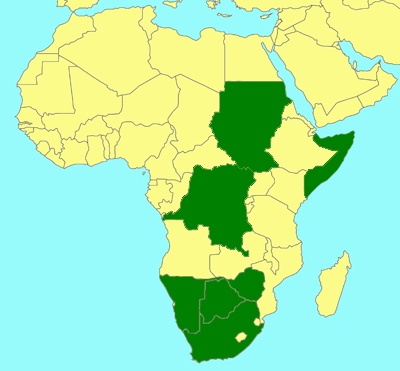Distribution
|

Botswana, Democratic Republic of the Congo, Namibia, Somalia, South
Africa, Sudan, Zimbabwe. Also Palaearctic.
|
Biology
|
Solitary, nests are constructed in clay-rich soils.
Females collect water to soften the clay enabling excavation of a
burrow. A turret entrance, up to 7cm in length, is constructed above the
burrow. They sleep in aggregations with their jaws embedded in grass
stems (Eardley
& Urban, 2010). |
References
|
Eardley, C.D. 1994.
The Genus Amegilla Friese in southern Africa (Hymenoptera: Anthophoridae).
Entomology Memoir No. 91, Department of Agriculture, Republic of South Africa
68 pp.
Eardley, C & Urban, R. 2010. Catalogue
of Afrotropical bees (Hymenoptera: Apoidea: Apiformes).
Zootaxa 2455: 1-548.
Eardley, C, Finnamore, A.T. & Michener, C.D. 1993. Superfamily Apoidea (pp.
279-357). In GOULET, H. & HUBER, J. (eds). Hymenoptera of the World:
an identification guide to families. Research Branch, Agriculture
Canada, Ottawa, Canada, 668 pp.
Eardley C.,Kuhlmann M., Pauly A. 2010.
The Bee Genera and Subgenera of sub-Saharan Africa. Abc Taxa vol 7: i-vi,
138 pp.
Michener, C.D. 2000. The Bees of the World. Johns Hopkins
University Press. 953 pp. |